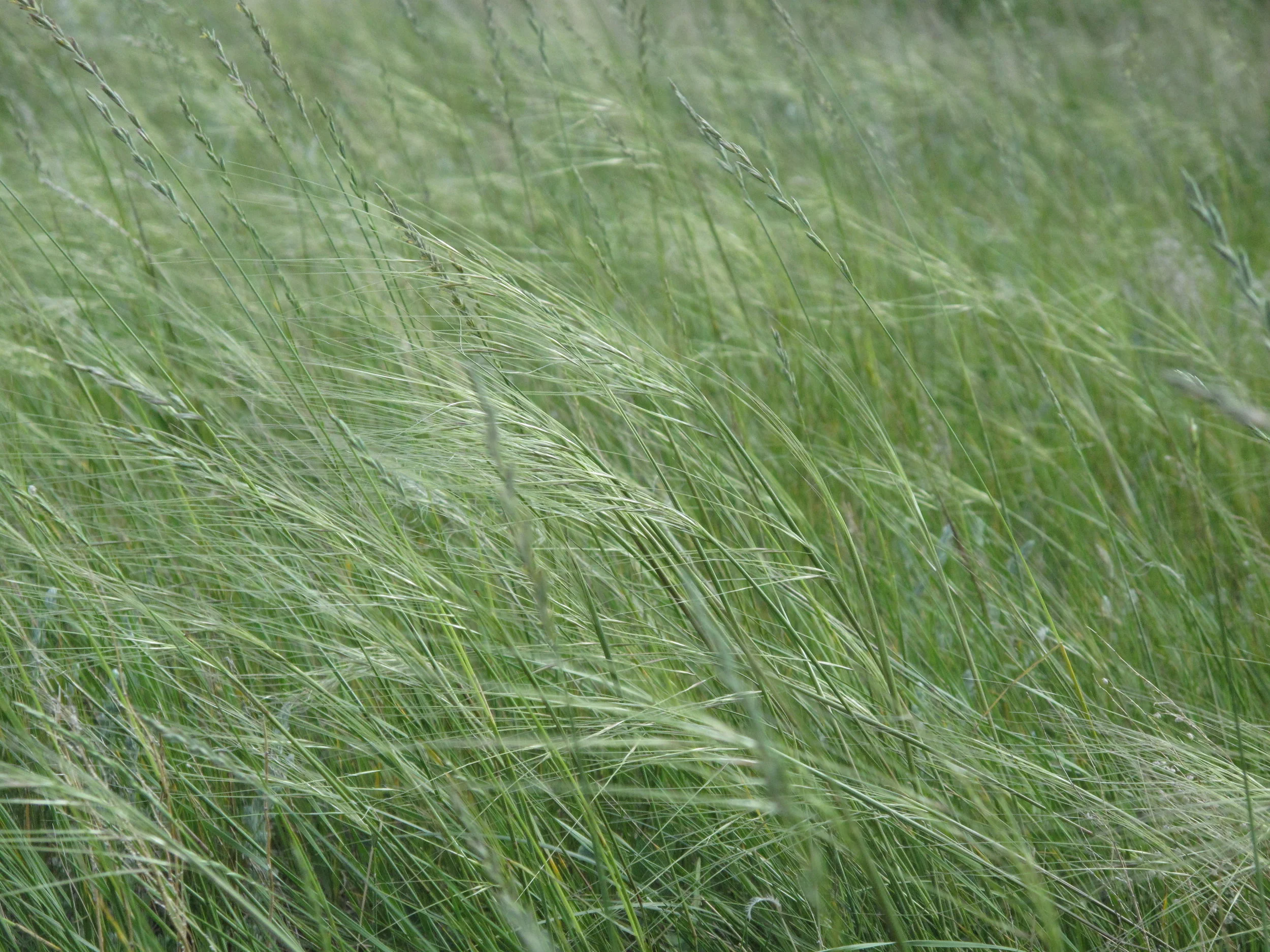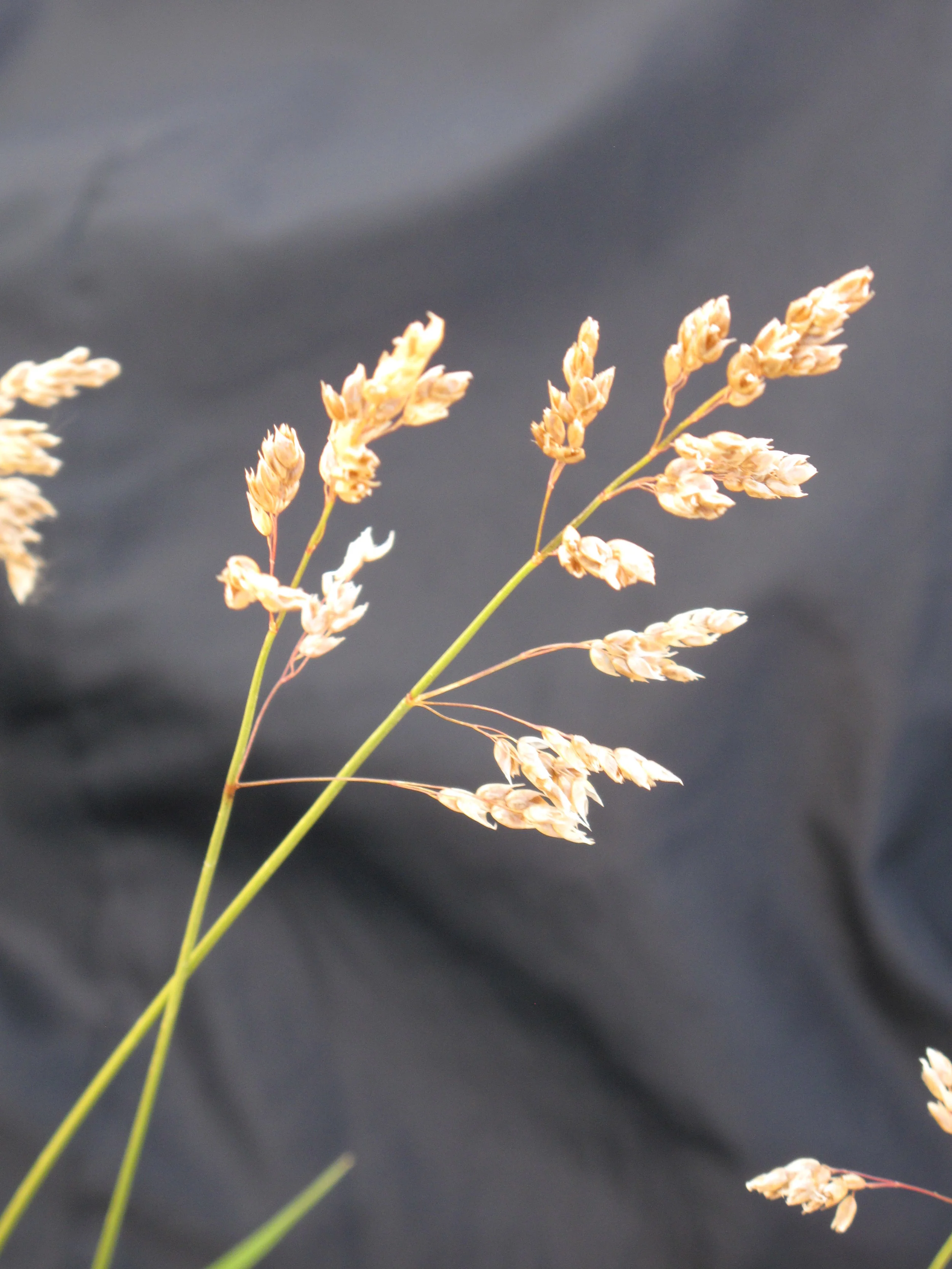This member of the pea family can turn hillsides bright yellow in early spring. Racemes of typical pea-shaped flowers develop on the top portion of the 15–40 cm stems, followed by conspicuous, curled seed pods, which hold up to a dozen seeds. These seeds contain a poisonous alkaloid that causes severe illness.
Read MoreThis inhabitant of dry grasslands forms a round rosette of grey-green leaves with very short stemmed daisy-like white flowers up to 18 mm wide.
Read MoreOne of the earliest wildflowers to bloom, yellow prairie violet brightens the grasslands in spring. The yellow flowers have purple veins, and are often reddish-purple on the outside. Its somewhat hairy leaves are lance-shaped.
Read MoreThis grass grows up to 60 cm tall with flower clusters 10–20 cm long. After blooming, it forms slender, forked branches with large seeds. It is an important grass in sandy soil as it binds the soil and is very resistant to wind action. It is palatable to livestock and can tolerate fairly heavy grazing.
Read MoreAlthough it is only 20–50 cm high, blue grama is the most important range grass of the Canadian Prairies and Northern Great Plains. With its one-sided seed spike that looks like an eyelash, it is a very easy to identify. It’s quite drought tolerant, and provides a major part of the diet of range animals during dry periods.
Read MoreOne of the important grasses of the prairies of the southern Rocky Mountains and foothills, rough fescue forms large tussocks with stems 40–120 cm tall and seed heads 10–20 cm long.
Read MoreVery common across the prairies, this grass grows in small dense tufts 30–60 cm tall. Its flowers form in a cluster, called a panicle, 10–20 cm long. The seeds have a sharp end (the needle), and are attached to an awl, or bristle, which is 10–15 cm long (the thread) that twists and curls.
Read MoreSweetgrass occurs in wet areas throughout the prairie. The stem is 30–60 cm high, with leaves 5 cm long and 2–6 mm wide. The seed heads are 10–15 cm long. The amazing quality of this grass is its wonderfully sweet fragrance. Evidence of the enthusiasm the Blackfoot felt for this grass is in the four names they gave it—all meaning fragrant smell.
Read MoreJunegrass is a good forage grass that occurs in scattered stands. It grows 10–50 cm high with a spike-like flower cluster up to 10 cm long that is pale green tinged with purple. After the seeds have set, the entire seed stalk becomes golden yellow.
Read MoreLook for plains muhly on slopes and crests of moderately to strongly eroded hillsides. This slender, wiry grass grows 15–35 cm tall with the flowers in July in very slender panicles up to 10 cm long. In the Lethbridge area, this grass is sometimes parasitized by an insect, causing a malformation of the seeds that become swollen and bent to the side.
Read MoreGreen needle grass is a tufted perennial with slender stems that grow up to 90 cm tall. It is a cool-season grass that is valuable for forage in both early spring and fall. (Van Bruggen 11)
Read More









